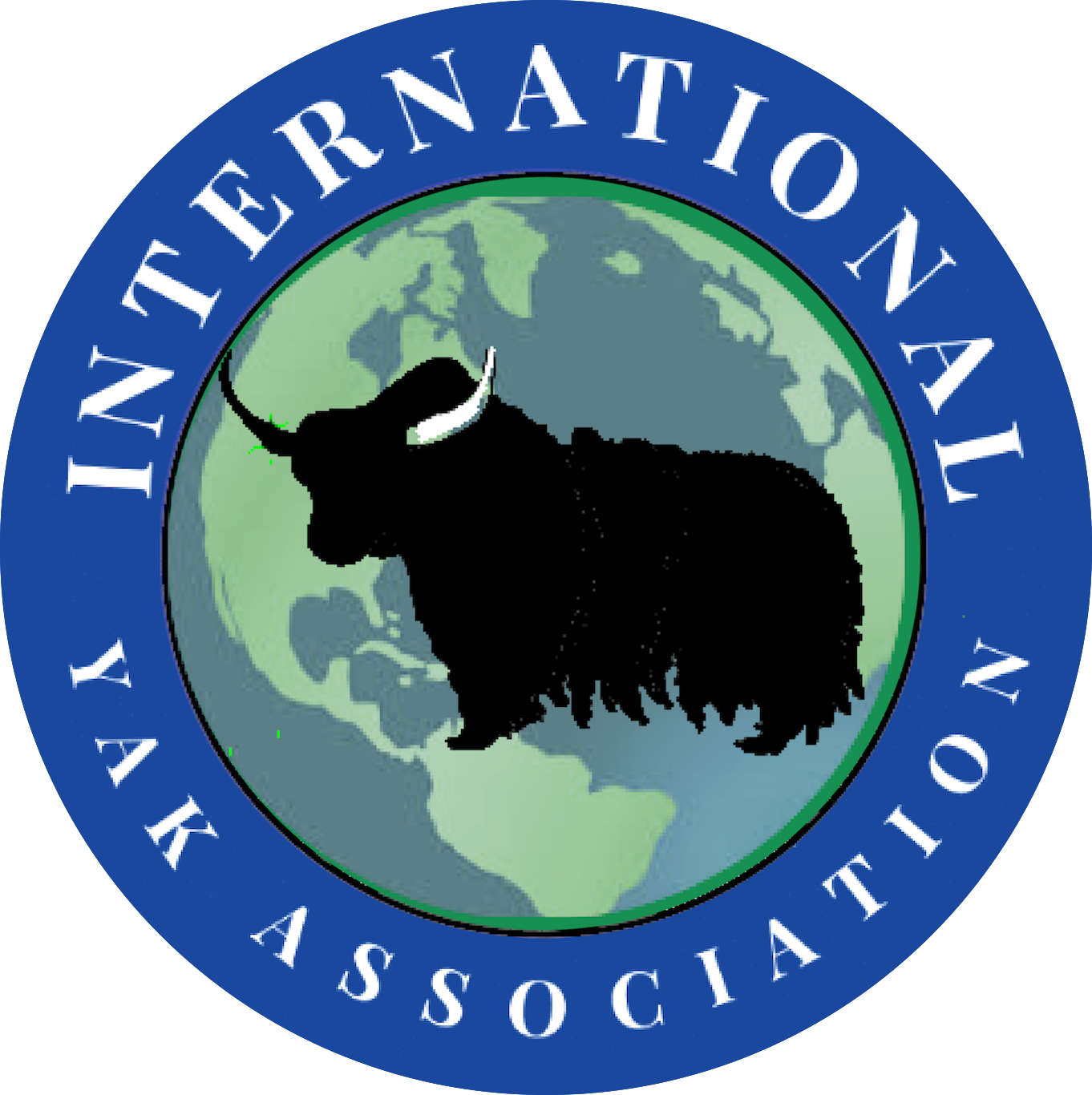IYAK Coat Color Genetics
Inheritance of Coat and Nose Color in North American Yak
Summary excerpt by Jessica Petersen.
Coat color and patterning
Research, enabled by the contribution of genetic samples from IYAK breeders, among others, has uncovered variation in a gene called KIT that is responsible for determining the three primary coat color patterns: solid (no white markings), trim (white commonly on the forehead, legs, and tail), or royal (most extensive white markings) of North American yak.
Solid colored yak are homozygous (have two copies) for the “solid” variant of the KIT gene. Royal animals are homozygous for the “royal” gene variant that causes white markings, and trim animals are heterozygous – they have one copy each of the solid and royal variants. Because each additional copy of the royal KIT variant adds more white, this inheritance pattern is termed additive.
As the genotype of a yak’s coat color pattern is often readily apparent by observing the yak, the genetic test for coat color (solid, trim, or royal) is not always necessary but can be useful to confirm that a genetic sample came from the correct animal. Additionally, as white markings on trim animals may be minimal and difficult to find, genetic testing of animals can reveal if an animal is indeed trim.
Imperial nose color
In addition to the variant determining coat color patterning, variation in another gene commonly implicated in pigmentation (MC1R) was identified as responsible for distinguishing native (grey nose) from imperial yak (black nose). As observed from breeding patterns, imperial is dominant to native, meaning a yak with an imperial nose, in addition to having the variant that results in imperial color, can carry the variant at MC1R for native coloration. Therefore, without a genetic test or without observing the outcome of many matings, one cannot certainly predict if an imperial cow or bull will always produce imperial calves. What is certain, however, is that a cross between two native animals cannot result in an imperial calf. Because the variant has been identified, genetic testing can distinguish homozygous (having two copies of the imperial gene variant) from heterozygous (having one copy of imperial and carrying one copy of native) imperial animals.
The data from the study outlined above also provide strong evidence that both the white patterning (the royal allele at KIT), and imperial nose color (dominant variant of MC1R) were derived from historic crossbreeding with cattle. This conclusion was supported by comparing the similarity of DNA sequences of these different variants to those from domestic cattle and other species of Bovids (e.g., wild yak, bison, water buffalo). The DNA sequence of the royal variant of KIT and the imperial nose color variant of MC1R were more similar to the sequences found in domestic cattle than the sequence of other wild Bovid species. However, no close similarity was found between the royal and imperial variants and current North American cattle breeds; this suggest these variants are not from recent crossbreeding. It therefore appears that crossbreeding that led to these variants being present in North American yak likely occurred many generations prior to the import of yak to the continent. Additional support for the hypothesis that these variants were present in yak populations prior to their arrival in North American is found in other published studies of Asian yak. The first (Chen et al. 2009) reports DNA variation in MC1R in Asian yak that is nearly identical to that associated with imperial nose color in North American yak (Chen et al., 2009). In the second study (Zhang et al., 2014), DNA sequence from white-faced domestic yak was very similar to the KIT variant determinant of white patterning (the royal variant). These and ongoing studies are helping to understand how genetics contributes to determining important characteristics of yak in North America while also contributing to a larger understanding of the history of the species.



